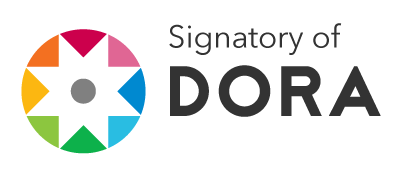Methodologies in the Study of Online Social Networks and Youth
DOI:
https://doi.org/10.37467/gka-revsocial.v2.1236Keywords:
Online Social Networks, Youth, Methodologies, Communication, InternetAbstract
Although there is a lot of research on online social networks and young people, most of it lack a rigorous methodology or do not have a representative sample. There are at least three difficulties. The first one is that social networks are reluctant to provide any information to facilitate the establishment of a universe of study. The second is that SN have a constantly changing universe; and the third one comes from the fact that access to user data is often impossible due to privacy rules that have been established as social networks have evolved. Therefore, researchers are applying traditional methodologies such as surveys or focus groups. However, the use of qualitative and quantitative methodologies together is rare. In this sense, this research proposes a new mixed methodology that can approach these researches to the reality of the relationship established between youth and social networking.
Downloads
Global Statistics ℹ️
|
958
Views
|
1422
Downloads
|
|
2380
Total
|
|
References
Acquisti, A. y Gross, R. (2006). Imagined Communities: Awareness, Information Sharing, and Privacy on the Facebook. Pittsburgh: PET. DOI: https://doi.org/10.1007/11957454_3
Aguilar, D. y Said Hung, E. (2010). “Identidad y subjetividad en las redes sociales virtuales: caso de Facebook”. Zona Próxima, enero-junio, 190-207.
Berman, J. y Bruckman, A. (2001). “The Turing Game: Exploring Identity in an Online Environment”. Convergence, 7(3), 83-102. DOI: https://doi.org/10.1177/135485650100700307
Bernete, F. (2010). “Usos de las TIC, Relaciones sociales y cambios en la socialización de las y los jóvenes”. Revista de Estudios de Juventud 88, 97-114.
Boyd, D. (2004). “Friendster and Publicly Articulated Social Networks”. Conference on Human Factors and Computing Systems (CHI 2004 ). abril 24-29. Vienna: ACM. DOI: https://doi.org/10.1145/985921.986043
Boyd, D. (2006). “Friends, friendsters, and top 8: Writing community into being on social network sites”. First Monday, 11(12). DOI: https://doi.org/10.5210/fm.v11i12.1418
Boyd, D. (2007). “Why Youth (Heart) Social Network Sites: The Role of Networked Publics in Teenage Social Life”. MacArthur Foundation Series on Digital Learning – Youth, Identity, and Digital Media Volume (ed. David Buckingham). Cambridge, MA: MIT Press.
Boyd, D. (2008). “Facebook's Privacy Trainwreck: Exposure, Invasion, and Social Convergence”. Convergence 14(1). DOI: https://doi.org/10.1177/1354856507084416
Boyd, D., Chang, M. y Goodman, E. (2004). “Representations of Digital Identity”. Conference on Computer Supported Cooperative Work (CSCW 2004). Chicago, IL, 6-10 noviembre.
Boyd, D. y Ellison, N. (2008). “Social network sites: Definition, history, and scholarship”. Journal of Computer-Mediated Communication , 13, 210-230 DOI: https://doi.org/10.1111/j.1083-6101.2007.00393.x
Boyd, D. y Heer, J. (2006). “Profiles as Conversation: Networked Identity Performance on Friendster”. Proceedings of the Hawaii International Conference on System Sciences, Kauai, Hawaii , HICSS-39. DOI: https://doi.org/10.1109/HICSS.2006.394
Bringué, X. y Sábada, C. (2011). Menores y redes sociales . Madrid: Foro Generaciones Interactivas.
Bruckman, A., Gov, S. y Yardi, S. (2006). “Managing Identities Across Multiple Online Communities”. UNC Social Software Symposium , Chapel Hill, NC. 8-9 diciembre.
Caldevilla, D. (2010). “Las Redes Sociales. Tipología, uso y consumo de las redes 2.0 en la sociedad digital actual”, Documentación de las Ciencias de la Información 2010, vol. 33, 45-68.
Cáceres, M. D., Ruiz San Román, J. A. y Brändler, G. (2009). “Comunicación interpersonal y vida cotidiana. La presentación de la identidad de los jóvenes en Internet”. Cuadernos de Información y Comunicación , 14, 213-231.
Castañares, W. (2010). “El uso de la fotografía en la autorrepresentación de los sujetos en las redes sociales”. En TORREGROSA, M. (coord.), Imaginar la realidad. Ensayos sobre la representación de la realidad en el cine, la televisión y los nuevos medios, Sevilla/Zamora, Comunicación social.
Castells, M. (2009), Comunicación y poder . Madrid, Alianza.
Cheunga, C., Pui-Yee, C. y Lee, M. (2010). "Online social networks: Why do students use Facebook?".
Computers in Human Behavior (2010) n. pag. Science Direct. Web. Febrero 2011.
Dwyer, C., Hiltz, S. y Passerini, K. (2007). “Trust and Privacy Concern Within Social Networking Sites: A Comparison of Facebook and MySpace”. AMCIS 2007 Proceedings . Paper 339.
Ellison, N., Lampe, C. y Steinfield, C. (2007). “The benefits of Facebook ‘friends: Social capital and college students’ use of online social network sites”. Journal of Computer-Mediated Communication, 12(4). DOI: https://doi.org/10.1111/j.1083-6101.2007.00367.x
Espinar-Ruiz, E. y González-Río, M. J. (2009). “Jóvenes en las redes sociales virtuales: un análisis exploratorio de las diferencias de género”. Feminismo/s: Revista del Centro de Estudios sobre la Mujer de la Universidad de Alicante 14, 87-106. DOI: https://doi.org/10.14198/fem.2009.14.06
Fovet, F. (2009). “Impact of the use of Facebook amongst students of high school age with Social, Emotional and Behavioural Difficulties (SEBD)”. 39th ASEE/IEEE Frontiers in Education Conference. Session W2G. San Antonio, TX, 18-21 octubre. DOI: https://doi.org/10.1109/FIE.2009.5350786
Fox, S. y Jones, S. (2009). “Generations Online in 2009”. Pew Internet & American Life Project.
Fraser, N. (1992). “Rethinking the Public Sphere: A Contribution to the Critique of Actually Existing Democracy”. En Calhoun , C. (ed.), Habermas and the Public Sphere , Massachusetts, MIT Press.
García, F. y Rosado M. J. (2012). “Conductas sociocomunicativas de los nativos digitales y los jóvenes en la web 2.0”. Comunicación y sociedad 25(1), 15-38.
Joinson, A. (2008). “Looking at, looking up or keeping up with people?: motives and use of Facebook”. En CHI ’08: Proceeding of the twenty-sixth annual SIGCHI conference on Human factors in computing systems , New York, NY, USA, ACM, pp. 1027-1036. DOI: https://doi.org/10.1145/1357054.1357213
Lampe, C., Ellison, N. y Steinfield, C. (2006). “A Face(book) in the Crowd: Social Searching vs. Social Browsing”. Proceedings of ACM Special Interest Group on Computer-Supported Cooperative Work, ACM Press , 167-170. DOI: https://doi.org/10.1145/1180875.1180901
Lampe, C., Ellison, N. y Steinfield, C. ( 2007), “A Familiar Face(book): Profile Elements as Signals in an Online Social Network”. Proc. CHI 2007, ACM Press , 435-444. DOI: https://doi.org/10.1145/1240624.1240695
Lenhart, A. y Madden, M. (2007). “Social Networking Websites and Teens”. Pew Internet & American Life Project.
Mcluhan, M. y Fiore, Q. (2001). El medio es el mensaje: un inventario de efectos . Barcelona, Paidós Ibérica.
Mazer, J., Murphy, R. y Simonds, C. (2007). “I’ll see you on ‘Facebook’: The effects of computer- mediated teacher self-disclosure on student motivation, affective learning, and classroom climate”. Communication Education, 56, 1-17. DOI: https://doi.org/10.1080/03634520601009710
O’Reilly, T. (2005). Web 2.0: Compact Definition? O'Reilly Radar.
Pempek, T., Yermolayeva, Y., y Calvert, S. (2009). “College students' social networking experiences on Facebook”. Journal of Applied Developmental Psychology . DOI: https://doi.org/10.1016/j.appdev.2008.12.010
Pierce, T. (2009). “Social anxiety and technology: Face-to-face communication versus technological communication among teens”. Computers in Human Behavior, 25, 1367-1372. DOI: https://doi.org/10.1016/j.chb.2009.06.003
Rainie, L. (2003). “Teenage Life Online: The Rise of the Networked Generation” en la Conferencia Singapore Youth.Net.
Ross, C., Orr, E., Sisic, M., Arsenault, J., Simmering, M. y Orr, R. (2009). “Personality and motivations associated with Facebook use”. Computers in Human Behavior 25, 578–586. DOI: https://doi.org/10.1016/j.chb.2008.12.024
Stutzman, F. (2006), “An evaluation of identity-sharing behavior in social network communities”. Proceedings of the 2006 iDMAa and IMS Code Conference, Oxford, Ohio.
Walther, J. B., Van Del Heide, B., Kim, S.-Y., Westerman, D., y Tong, S. T. (2008). “The Role of Friends’ Appearance and Behavior on Evaluations of Individuals on Facebook: Are We Known by the Company We Keep?”. Human Communication Research, 34(1), 28-49. DOI: https://doi.org/10.1111/j.1468-2958.2007.00312.x
Downloads
Published
How to Cite
Issue
Section
License
Those authors who publish in this journal accept the following terms:
-
Authors retain copyright.
-
Authors transfer to the journal the right of first publication. The journal also owns the publishing rights.
-
All published contents are governed by an Attribution-NoDerivatives 4.0 International License.
Access the informative version and legal text of the license. By virtue of this, third parties are allowed to use what is published as long as they mention the authorship of the work and the first publication in this journal. If you transform the material, you may not distribute the modified work. -
Authors may make other independent and additional contractual arrangements for non-exclusive distribution of the version of the article published in this journal (e.g., inclusion in an institutional repository or publication in a book) as long as they clearly indicate that the work was first published in this journal.
- Authors are allowed and recommended to publish their work on the Internet (for example on institutional and personal websites), following the publication of, and referencing the journal, as this could lead to constructive exchanges and a more extensive and quick circulation of published works (see The Effect of Open Access).













